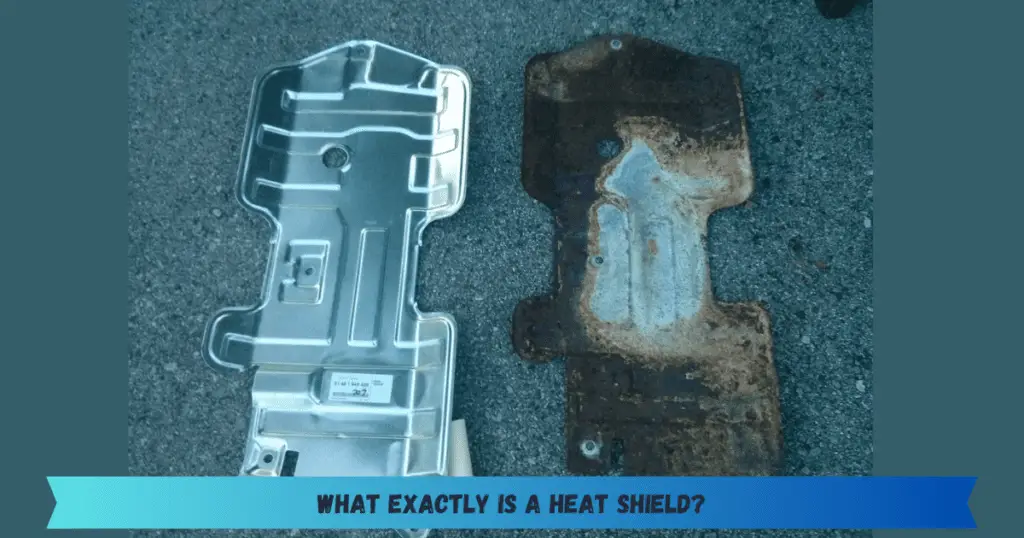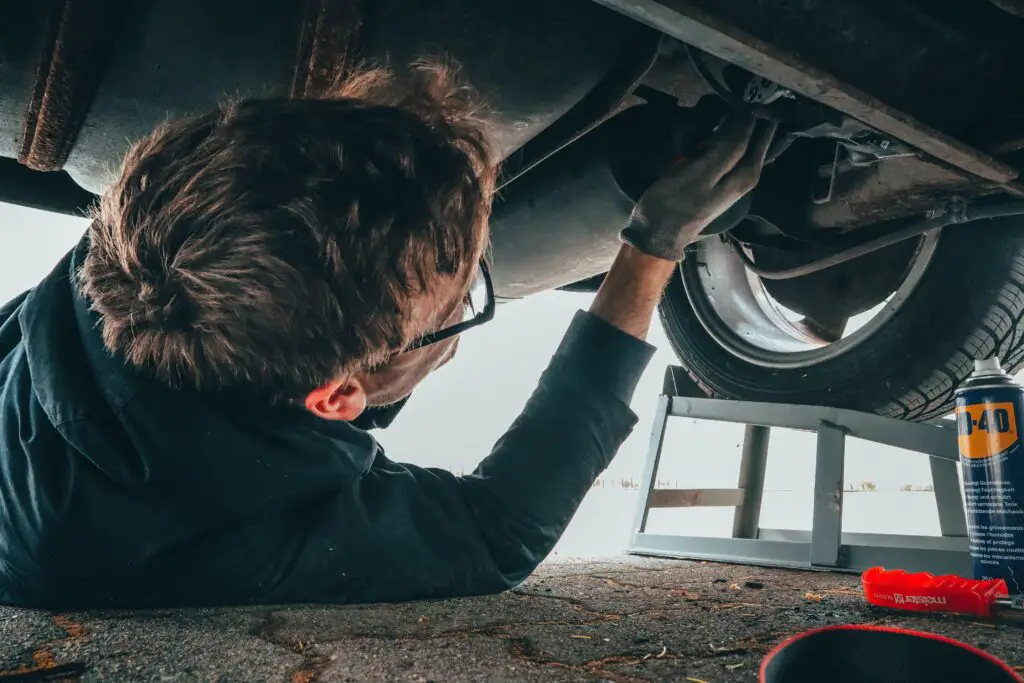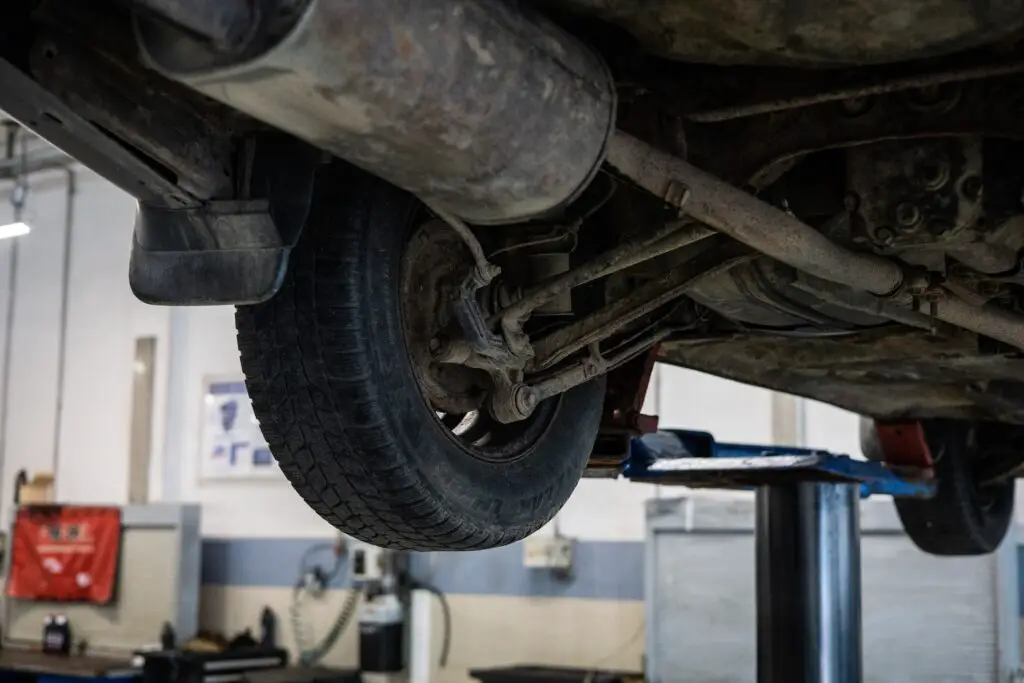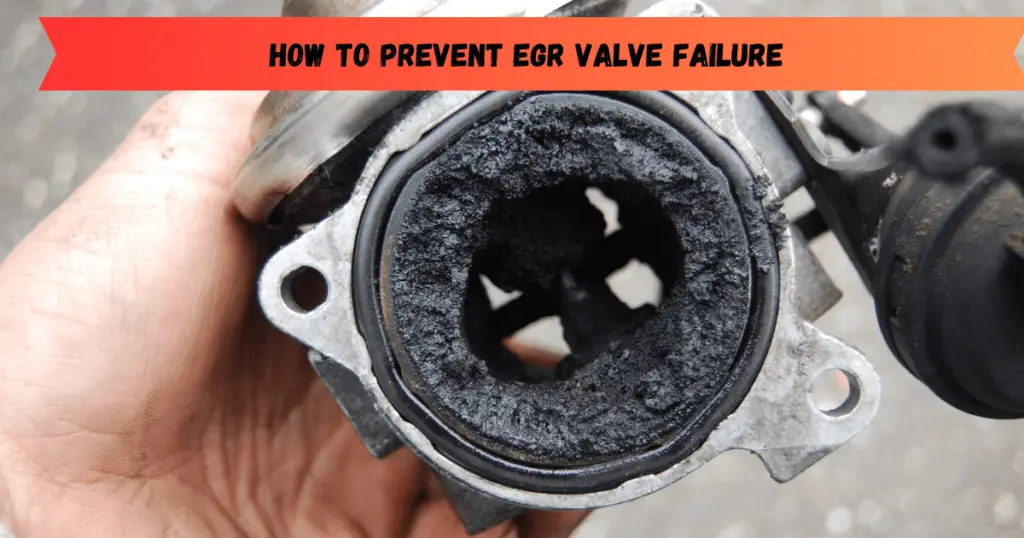While this tempting thought crosses many drivers’ minds, removing heat shields is never recommended. These protective barriers serve important purposes for your vehicle’s safety and performance.
This comprehensive article will explore heat shield functions, the risks Can I Remove The Heat Shield From My Car of removing them, and how to properly handle heat shield issues. Let’s dive in!
What Exactly is a Heat Shield?
Heat shields are metal plates fixed to the underside of vehicles to protect temperature-sensitive components from the extreme heat of the exhaust system. They’re made from aluminum or stainless steel and installed in the following locations:

- Along the exhaust manifold to safeguard the engine bay
- Around the catalytic converter to prevent overheating
- On the floor pan/transmission tunnel to isolate the cabin
- Over the fuel tank, brake lines, wiring harnesses, etc.
By absorbing and dissipating thermal energy, heat shields allow these critical systems to operate safely at normal temperatures. They’re a fundamental safety feature engineered into all vehicles.
Why are Heat Shields Necessary on Cars?
Heat shields serve several invaluable purposes:
Fire Prevention
The number one job of heat shields is fire prevention. Without them, flammable debris could ignite under the car. Fuel leaks or electrical shorts may also cause flames.
Protect Components
Brakes, fuel lines, sensors, and suspension parts will fail prematurely if exposed to extreme temps. Heat shields extend their lifespan dramatically.
Passenger Comfort
Insulating the floor and transmission tunnel keeps the cabin comfortable. Removing that protection allows excessive heat transfer inside.
Minimize Corrosion
Heat shields take the abuse of weather and road chemicals instead of the exhaust itself. This reduces the corrosion of pipes, mufflers, and converters.
Maintain Performance
Enclosing the exhaust keeps components hotter, improving engine power and efficiency. Removing shields causes faster cooling and loss of performance.
Manufacturers didn’t add heat shields as an afterthought – they are integral to the vehicle’s safety, comfort, and drivability. Now that you understand their importance, let’s explore the repercussions of removing them.
What Can Happen if You Remove the Heat Shield?
Can I Remove the Heat Shield From My Car? While it may seem like a quick fix for rattles or debris build-up, removing heat shields exposes your car to some hazardous conditions:
Fire Risks Increase Exponentially
The exhaust can reach 1500°F. Plastic, rubber, or organic materials contacting unshielded sections could easily ignite. Forest services cite catalytic converters as the Cause of roadside wildfires.
Components Depreciate Quickly
Brake lines, fuel hoses, oxygen sensors, and electronic modules rapidly degrade from continuous high-heat exposure. This leads to reduced braking ability, drivability issues, and electrical failures.
The Cabin Becomes Unbearably Hot
Removing floor pan insulation allows painfully high temperatures to permeate the interior. This also taxes the A/C system trying to cool it.
Excessive Corrosion Occurs
Without protection, the exhaust rusts and rots much quicker. Holes develop, gases leak out and particulates enter the cabin. It’s not a healthy environment.
Performance and Fuel Economy Suffer
Exposed exhaust systems cool down faster, reducing scavenging efficiency. This causes power loss, throttle lag, and decreased MPG.
As you can see, removing heat shields is never recommended and should only be done temporarily while performing repairs. Now let’s go over how to properly handle heat shield issues.
What to Do if Your Heat Shield is Loose or Rattling
Loose heat shields are the most common problem as vehicles age. The mounting points rust and hardware breaks causing annoying rattling:
Step 1: Locate the Source
Crawl under the car while it’s safely raised and cooled off. Shake components to isolate the rattle, then inspect the heat shield mountings.
Step 2: Re-Secure the Shield
If it just needs tightening, use new stainless steel worm gear clamps to reinforce the connections. Replace any broken or corroded mounting hardware as well.
Step 3: Modify the Shield
Bend any sections making contact back into shape. Fill holes and cracks with high-temp RTV silicone or exhaust putty. Sand any sharp burrs smoothly.
Step 4: Add Supports
For extra rigidity, rivet small strips of sheet metal as support gussets across cracks or along loose edges.
Follow these guidelines to repair shields properly at the first signs of trouble. Avoid temporarily removing them unless necessary.
When Replacement of the Heat Shield is Needed
If you’ve tried all DIY fixes but the heat shield still rattles hopelessly, then it likely needs complete replacement. Warning signs include:
- Large portions missing or rusted through
- Cracks/damage at critical mounting points
- Perforations too severe for patching
- Irreparable warping or deformation
You have a few options for getting a new heat shield:
- Order an OEM replacement from the dealer – an expensive but perfect fit
- Check scrap yards for a used OEM shield in good shape
- Buy a universal aftermarket shield and modify it to fit
- Have a full custom shield fabricated at an exhaust shop
Take measurements and component photos before removing the old shield for reference. Avoid driving without any shield installed.

Step-By-Step DIY Heat Shield Repair Instructions
Follow this complete process to safely repair a failing heat shield:
Step 1: Lift the Vehicle
Use ramps or jack stands to safely raise all 4 wheels off the ground. Make sure the car is stable.
Step 2: Localize the Rattle
Start the engine and determine which area the rattle emits from. Isolate components by shaking them with your hand.
Step 3: Inspect Mounting Points
Once identified, switch off the engine and allow full cooling. Then get underneath and check all mountings. Look for looseness, corrosion, and damage.
Step 4: Detach the Shield
Remove or loosen any clamps, bolts, screws, or hangers so the shield can be maneuvered freely. Avoid prying!
Step 5: Clean Mounting Surfaces
Use a wire brush and sandpaper to remove grime/rust from the shield and exhaust pipe surfaces.
Step 6: Repair or Replace
Assess if the shield can be patched up or needs replacement. Use high-temp epoxy, tape, and RTV silicone to fill holes and reinforce brackets.
Step 7: Reinstall Securely
Position the original or new shield precisely. Use fresh stainless hardware and secure all mounts tightly. Verify no rattling remains before finishing.
With this systematic approach, you can permanently solve annoying heat shield issues using affordable materials and a little elbow grease.
Helpful Products for DIY Heat Shield Repairs
Having the right gear makes heat shield repairs much smoother. Here are top-rated products:
Hose Clamps
Heavy Duty Worm Gear Clamps – Reinforce loose connections
Shield Patching Supplies
High Temp Silicone Sealant – Seal cracks and holes
Exhaust Repair Tape – Patch small perforations
Replacement Heat Shields
Aftermarket Universal Shields – Affordable alternative
OEM Heat Shields – Perfect fit from dealer
Having the right materials for the job saves lots of hassle down the road. Invest in quality repair products.
Frequently Asked Questions
Let’s recap the key points about heat shields and address some frequently asked questions:
What happens when you remove a heat shield?
Removing heat shields exposes your car’s underside to extreme exhaust temps leading to component failures, interior heat, rust, and potential fires. It also reduces performance.
How important is a heat shield on a car?
Heat shields are very important for protecting critical systems from the exhaust heat. Never permanently remove them except when completely worn out.
Is it okay to remove the heat shield from the hood?
No, the hood heat shield directs heat away from the engine bay and should always remain installed. Repair any rattles instead of removing them.
Can damaged heat shields be repaired?
Yes, heat shields can often be patched, reinforced, and resecured instead of fully replaced if mechanically inclined. Use temp epoxy, tape, and clamps.
Are exhaust heat shields necessary components?
Absolutely! Heat shields play vital roles in keeping your car safe, comfortable, and operating at peak efficiency. Never drive without them functioning properly.
What are the benefits of heat shields?
The main benefits are fire protection, preventing component failures, maintaining cabin comfort, reducing corrosion, and preserving optimal exhaust performance.
Conclusion
We hope this comprehensive guide has emphasized the importance of keeping exhaust heat shields intact and in good working order. Although removing them may seem convenient to stop rattles, it jeopardizes your vehicle’s safety and drivability.
Always take the time to properly diagnose and repair loose shields using the tips provided. And only ever drive with heat protection in place, as the manufacturer intended. Your car’s longevity depends on it!

